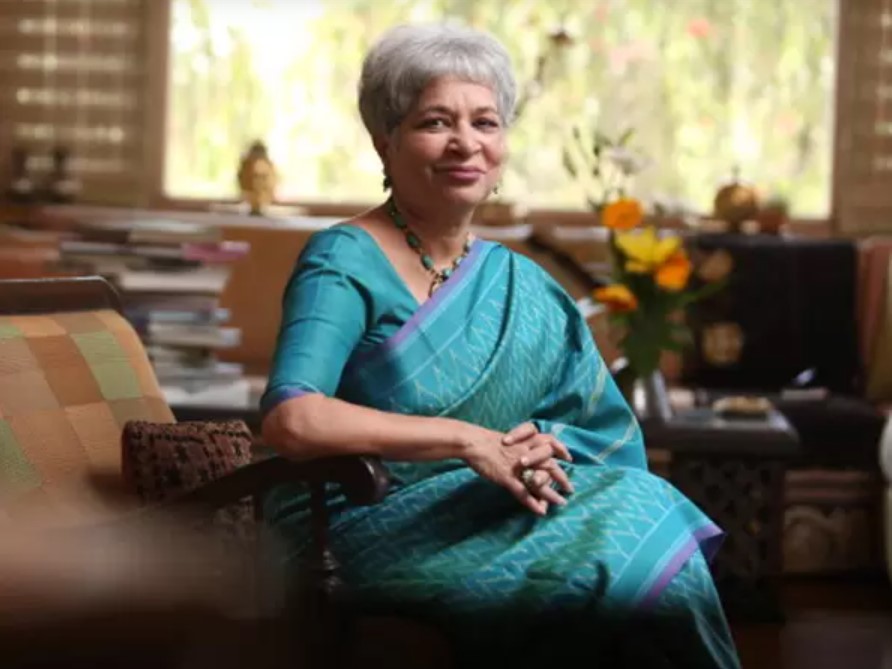Ms Laila Tyabji is a designer, writer, and the founder and Chairperson of Dastkar, a Society for Craftspeople. She has been working in the craft and innovation sector since 1978. In 2012, she was awarded the “Padma Shri” for her extensive contributions to Indian handicrafts. Ms Laila is the second-ever recipient and the first Asian to receive the “Aid to Artisans Preservation of Craft Award” in New York in 2003. Many individuals have found Laila Tyabji as an inspiration.
The threads of India’s different handicraft traditions have been fostered and passed down through centuries, creating a fascinating cultural tapestry. Laila Tyabji, a visionary who has committed her life to the cause of Indian handicrafts, advocates conserving and revitalising these traditions. The article describes her relentless efforts that have brought dying crafts back to life and empowered innumerable artisans, assuring their proper position in India’s socioeconomic fabric.
She strongly believes in sustaining the Indian traditional handicrafts and handloom textiles and acquires a gorgeous collection of Pherans, Anarkali, and kurtas embroidered with Lambani, Kutchi, and Chikankari. Tyabji’s casually elegant image, which includes short, salted hair, handloom saris, Kolhapuri chappals, kohl-lined eyes, and unique jewellery, has propelled her to the top of India’s “most stylish” lists.
Early Life
Ms Laila landed in Bombay from Belgium as a two-year-old child. She had a light complexion, was attractive and humorous, and only spoke French. “I was such a joke in India,” Laila recalls. Soon after, she dropped her French and became the Indian child she was. Tyabji was born in 1947 into a Sulaimani Bohra Muslim household in Delhi. She studied art at MS University’s Faculty of Fine Arts in Baroda, India, and the Toshi Yoshida Studio in Japan. She returned to India and worked as a freelance designer in textiles, graphics, and theatre before Dastkar.
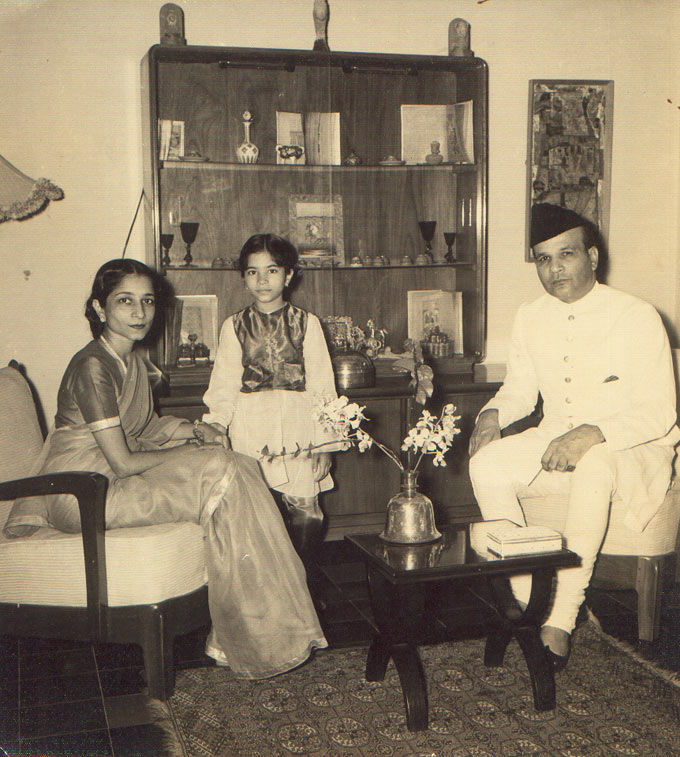
The journey and vision of the Dastkar Initiative
Ms Laila Tyabji co-founded Dastkar in 1981 at the age of 34 years to revive traditional crafts by providing a platform for artists to showcase their talents and interact with a larger audience. She visited Kutch in the late 1970s and spent six months documenting the work of craftspeople in Kutch, focusing on embroideries and patchwork. Kutch became a lifelong source of creation and inspiration for her, evoking a lifelong quest for crafts. After returning from Kutch, Tyabji was a buyer and merchandiser for Taj Khazana, a store known for finely curated Indian arts and crafts. She was determined to showcase traditional Indian crafts to urban Indian buyers. However, the idea was successful but lacked profit as neither the store manager nor suppliers found it cost-effective to pack and transport products from rural areas to Delhi. She was frustrated with the lack of connection between craftspeople and customers in Delhi and set out to establish one. This led to the creation of Dastkar, a company that combines a deep appreciation for craft and recognises its market potential.
The first Dastkar crafts bazaar was held in New Delhi in 1981. Tyabji’s work at Dastkar focused on mapping craftspeople’s personal and creative direction, forming a link between them and city buyers, and working on design issues, pricing, sizing, and policy changes for the evolution of the crafts sector as a business model. She believed that skilled professionals should not be treated as downtrodden or relics and has been associated with Sewa (the Self-Employed Women’s Association) of Lucknow.
Laila Tyabji founded Dastkar to support artisans in reclaiming their place in the economic mainstream. Over the past 41 years, Dastkar has worked with over 350 craft groups across India, emphasizing the empowerment of craftspeople, particularly women, through skill development, design innovation, and market access. The Dastkar initiative focuses on assisting artisans in learning to use their innate abilities as a source of work, income, and independence.
Contributions to the development and revival of Indian Handicrafts
Bridging the gap between fine and commercial art, Ms Tyabji collaborated closely with craftspeople to build Dastkar into an enormous structure focused on design and development. She focused on the significance of working directly with artisans to improve their skills, which is essential to stay in touch with contemporary demands. Her work has brought her to Kashmir, Ranthambore, and Bellary, where she has assisted terrorist insurgent victims and displaced populations and restored Lambani needlework. Tyabji is the most famous proponent of sari and is known for her bohemian perspective, outspokenness, and unique style.
Ms Tyabji discusses her experience from 1970 during an interview with Mint newspaper, when she went on a three-month assignment to Gujarat State Handloom and Handicrafts Development Corporation’s outlet as a guest designer, “Three months became six, I would sit with the women to do the embroideries and patchwork. The only way to teach is with personal invention- that’s how you can hone a skill.”
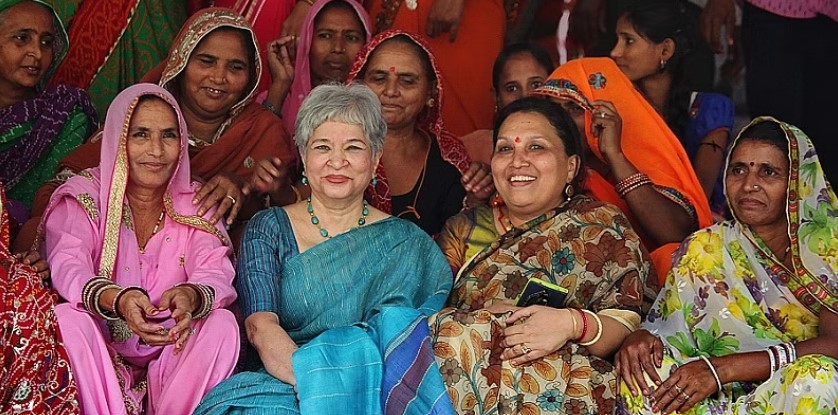
For almost four decades, Ms Laila has worked with grassroots artisans throughout India. Many of her most rewarding projects involve developing new livelihood opportunities through craft for pastoral and marginalised rural communities, such as bonded labour in Bihar, displaced villages in Ranthambore, tribals in Orissa and Karnataka, insurgency victims in Kashmir, and, recently, the craftspeople decimated by the Covid pandemic and subsequent lockdowns.
Tyabji’s efforts extended to the international stage as well. She recognised that in an increasingly globalised society, admiration for Indian handicrafts needed to transcend national boundaries. She promoted India’s handmade legacy to audiences worldwide through various activities, including exhibits and partnerships with foreign designers. Not only did these open new markets for craftspeople, but they also promoted cross-cultural understanding and respect.
Tyabji included handloom fabrics into her everyday outfit after turning 50 and deciding to wear only sarees. Her new-saree-look-a-day selfies gained a lot of attention and were well-praised! In an interview with The Hindu, Tyabji discussed how the younger generation is frequently ignorant of India’s rich legacy and how she strives to minimise this awareness among youth. Laila often talks and publishes craft, design, and social concerns in national and international forums. Ms Laila’s book “Threads & Voices: Behind the Indian Textile Tradition” was published by Marg in 2007. She also researched and wrote about many Indian embroidery, textile, and craft traditions.
Hardships and Challenges
Dastkar was launched with a noble purpose; all needed was to put in the effort to achieve it. The folks at Dastkar began their adventure to ensure India’s handmade legacy remained secure and cared for! However, they encountered several challenges as Indian inheritance increasingly became a marginalised idea due to urbanisation. Furthermore, there was a vast disparity between rural craftspeople and urbanites. Dastkar was created to bridge the divide between the two while offering the gift of awareness and engagement by acting as a mediator, assisting both parties in this transaction.
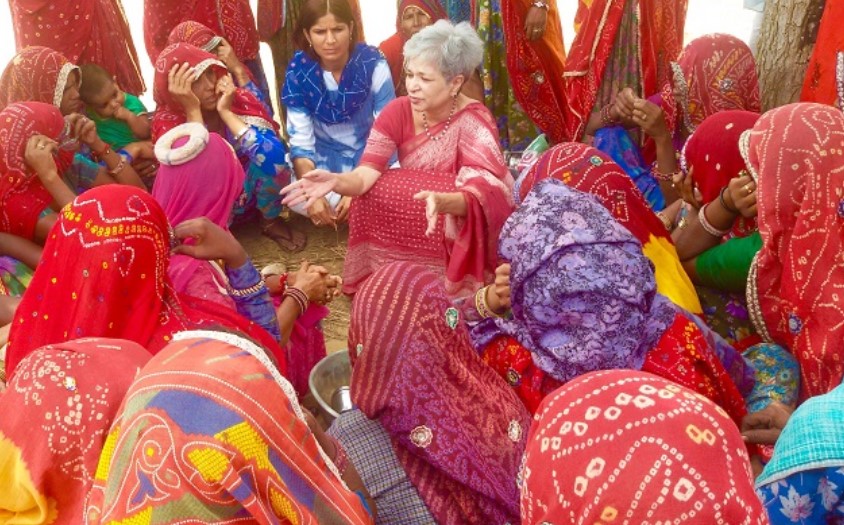
Tyabji’s path to becoming Dastkar’s leading woman was not always easy. While discussing Dastkar’s first few projects, such as working with SEWA in Lucknow and the Sandur Lambani craftspeople, she also discusses the challenges the organisation faced in its early years, such as overcoming artisan’s initial scepticism about the possibility of remuneration and establishing autonomous production systems. Craftspeople are incredibly traditional, opposed to experimenting, and fearful of novelty. While describing some of her initial struggles with craftsmen, Tayabji says, “They don’t understand fast colours, form, or financial management. You are cocky and romantic when you begin, but craftspeople can also start misbehaving. Sometimes you put in so much work, but what comes out is a mouse” Because of this, she has always been a hands-on mentor.
Legacy
“I don’t understand why we don’t see that craft is a huge economic sector, which is also unique worldwide. We should be investing in it just like any other economic activity,” says Ms Tyabji while emphasising the potential of Indian crafts markets and its awareness to the ordinary people and business sector. She promoted inclusion and sustainability through the Dastkar initiative. She recognised that uplifting craftspeople and their communities required a multifaceted strategy. Tyabji thought that innovation did not mean abandoning tradition; it may mean recreating traditional processes in novel and fascinating ways. This method retained the spirit of the crafts while also making them relevant to modern lifestyles. Tyabji’s work with Dastkar produced several success stories, and her influence went well beyond the crafts. She empowered rural women by offering them training and the opportunity to become financially independent.
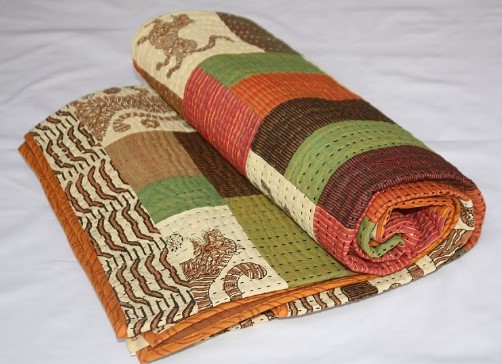
Laila Tyabji’s legacy is centred around her advocacy for governmental changes that protect the interests of craftspeople. She recognised the importance of governmental and non-governmental groups’ recognition and assistance in surviving traditional crafts. Tyabji’s lobbying activities raised awareness about the difficulties faced by craftsmen, sparking conversations about equitable salaries, resource access, and intellectual property rights protection. Her ability to bridge the gap between grassroots activity and policy debates was crucial in creating a conducive environment for craftsmen to thrive. Tyabji’s clear thinking and devotion to more significant life objectives set her apart from the six purposeful women who started Dastkar in 1981. She has been an outspoken supporter of the preservation and development of traditional crafts, and as a Muslim woman in India, she advocates for advancement and tolerance through her initiatives. Laila Tyabji is indeed an inspiration to everyone as a craft revivalist!
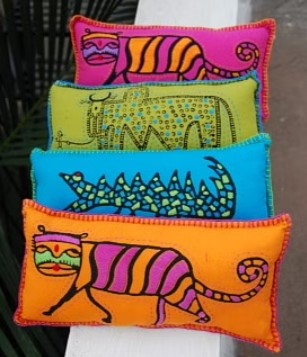
Conclusion
The commitment and vision of Laila Tyabji have revolutionised Indian handicrafts, revitalising traditions and empowering artisans. Her legacy motivates people and organisations to conserve and promote traditional crafts, supporting creativity, sustainability, and socioeconomic progress retaining India’s colourful charm. Her initiatives have revived interest in Indian handicrafts, incorporating them into modern lifestyles while maintaining their historical relevance. Laila Tyabji and Dastkar’s tale is a monument to resilience, inventiveness, and steadfast determination as it paved the way for an equitable society that has brought a glimmer of hope for preserving cultural heritage and empowering those who shape it.

Contributor

